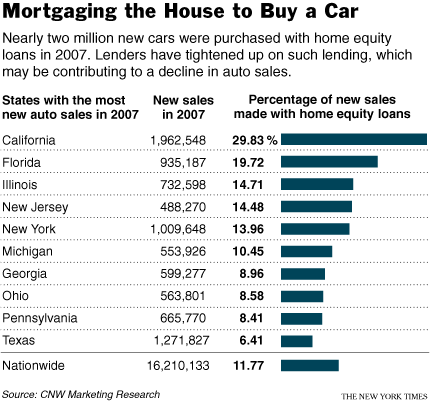The sudden rise in gas prices is affecting all Americans, and people are finally coming to the realization that those prices are here to stay. Here are the things we’re doing and thinking about in response to the increase in costs:
First, let me give some context. We live in the Austin suburb of Pflugerville, which is about 16 miles northeast of downtown Austin. I work on the near northwest side of Austin, and my commute to work is about 16 miles each way. Katie teaches part-time at St. Edward’s University which is just south of downtown Austin. During the semester, she has to drive to campus three days a week. The city of Pflugerville is not a part of the Austin-area transportation authority, so there is no public transportation in our area. We own a 2002 Honda Odyssey minivan, which gets 20-24 mpg in city driving, and a 2007 Scion tC which gets 25-28 mpg in city driving.
OK, here we go…
Budgeting more money for gas
This is the big one. Gasoline is now costing us a couple hundred dollars more per month than before. We’ve changed our budgeting and are eliminating other inefficiencies in our monthly budget to free up the gas money. So far, we’ve managed not to change anything major in our monthly spending, thankfully.
Weighing the gas cost for pretty much every trip by car
I used to never consider the cost of gasoline when driving around town. That quick trip out for one item sounds a lot more frivolous when you consider that it costs $4-8 round-trip just for the gasoline. Now we’re making fewer spur-of-the-moment trips and trying to group errands together. I also used to often find some errand to run at lunch, just as an excuse to get out of the office for a while. Not so much any longer.
Considering trading in our cars for more fuel efficient ones
I’ve run some back-of-the-envelope numbers for trading our minivan for a Prius and trading my Scion tC for something cheap and very fuel efficient, like a Honda Fit. Calculated at $4.00/gallon, each scenario results in at most $100/month savings, probably less. That’s a slim enough margin that I’m not going ahead with either of them right now. If gas continues to rise in price, we’ll reassess again.
Carpooling
One guy who works in my office lives in our neighborhood, so I asked him about carpooling. No decisive results. I also asked another neighbor who works near my office. Also no positive results yet. I signed up on a bunch of sites that match you with other prospective carpoolers, but there doesn’t seem to be enough of them on any of the sites to find good matches. The next step is to post flyers around my neighborhood. I’ll decide whether to do that after we get back from vacation soon.
Job change for Katie
Katie is currently employed as an adjunct professor at St. Edward’s University, which is on the other side of Austin. She only goes to campus three days a week for each of the two 15-week semesters, so her commute isn’t terribly bad to start with. But she’s looking into getting certified to teach secondary education and trying to get a job at the high school or the middle school that are two blocks from our house. In addition to doing away with her commute, that would put her close to the kids.
Buying a small motorcycle/scooter
I would have no problem commuting by scooter to work. I used to drive a motorcycle. But the only way to make this really worthwhile would be to replace one car with a scooter. Otherwise, the additional costs of the scooter–registration and insurance–would just cancel out the gas savings. But with kids, this just isn’t a good option. Maybe if Katie does get employed near home, it’ll work, but I’m doubtful.
Budgeting the cost of gas into our vacation this year
We frequently drive to the mountains of New Mexico for vacation, and we’re doing it again this summer. It’s a 750 drive each way, so we usually end up driving 2000+ miles for the whole vacation. In the past, we didn’t think much about the cost of gas; we just charged the gas and paid it out over the next couple of months after vacation. This summer, however, we’ve decided that’s not feasible; it would take too long to pay off and add/or add too high a burden to our monthly budget after vacation. So, we’ve budgeted the cost of gas into our vacation costs and will be paying as we go this time.
Moving
We’ve pondered the idea of moving further into Austin, but so far, this is not a serious consideration. Most importantly, we have lived in Pflugerville for ten years, and we have made a life for ourselves here. The kids are settled into their schools and social circles. Furthermore, we know most of our neighbors, a lot of other people in the community, and many of the kids’ teachers. Not only would we have to start over if we moved, but in an urban setting, that intimacy with the community would be much more difficult to obtain (that’s a reverse on the usual urban/suburban stereotypes). My point here is not that we prefer the suburbs; but that we’ve already put down roots here, which happens to be a suburb, unfortunately. And we don’t take lightly the prospect of having to start over anywhere in that regard.
Cost and lifestyle changes are a less significant factor. If we moved into town, we’d have to move into a much smaller house. In fact, to live in the Austin neighborhood we like, we’d probably have to move into a townhome that’s half the size of our current house. We’re not nearly as concerned about the comfort factors of our current suburban lifestyle as we are about the social factors mentioned above.
Finally, compared to other cities and even other suburbs within Austin, we don’t live all that far from the center of the city and our jobs. The commuting is a pain in the butt and becoming more expensive, but it’s not nearly as bad as many other suburbanites deal with.


